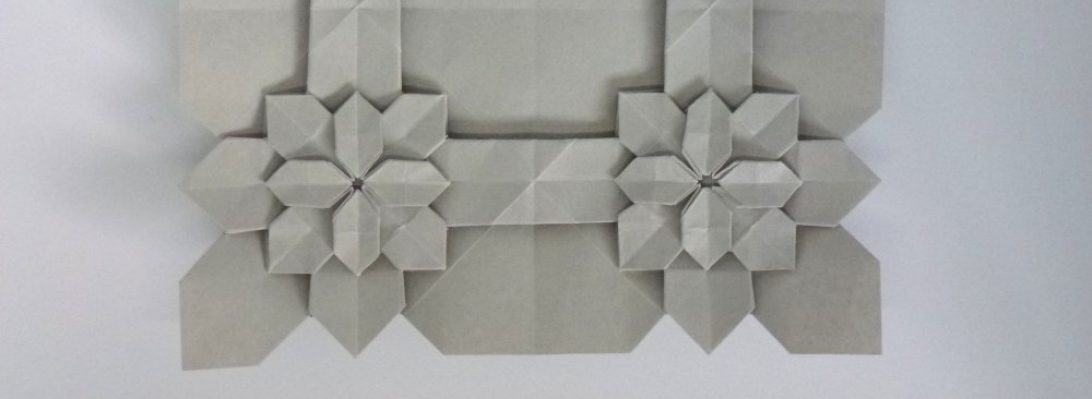As I approached the date of my retirement, I genuinely struggled with how I could sum up my work-life, and how was going to say thankyou, personally, to so many people I have loved working with.

It occurred to me that Origami could be my savior, and something hand-made and precious was the order of the day, so set about making Naomiki Sato’s pentagonal “Hybrid Tea” roses – in my opinion the zenith of his glorious rose designs. From a pentagon, with some skill, you sculpt a spiraling bloom of some 25 petals – genius as it is folds only – no cuts, no glue. Originally I was going to present them stemmed, but re-worked the idea to have them sit on calyxes instead.
I gave myself 3 weeks, and it turned out that was not really enough time, as each bloom from go to woe takes just over an hour – even when batch folding. It was a labour of love, and I got it done, and resulted in an amazing coincidence. I listed the recipients, and it totaled 33 – this number corresponded to the number of years I have been working at this current school – it was clearly meant to be.

Acquiring paper, cutting perfect pentagons, calculating the relative size different between flower and calyx was the first task. I found if I cut the largest pentagon I could from an A3 sheet for the bloom, then the corresponding largest pentagon from an A4 sheet was perfect for the calyx.
Production-line techniques then ensued – precise pre-creases, pre-collapse wrangling and locating landmarks for secondary petal separation all have to be done first, and at this scale it is fiddly folding, and you need about 7 fingers on all of 3 of your hands. Once the dissected spiral collapse is complete the really hard part starts – shaping the petals to be soft curls in staggered cascades – quite a knack.
Continue reading











